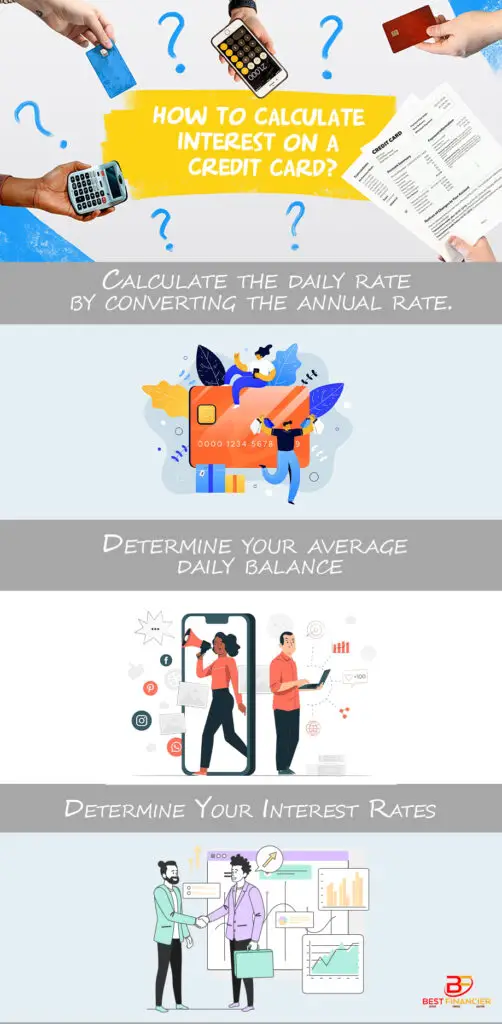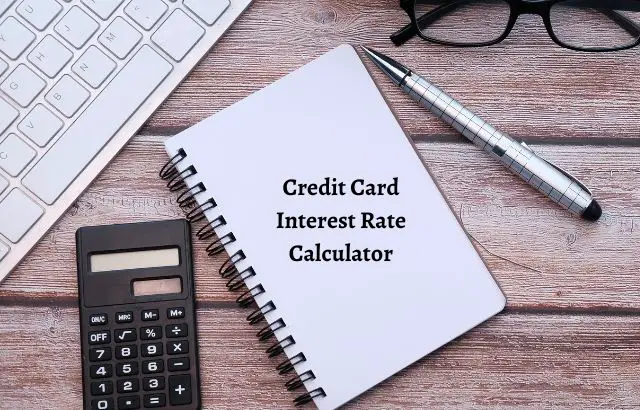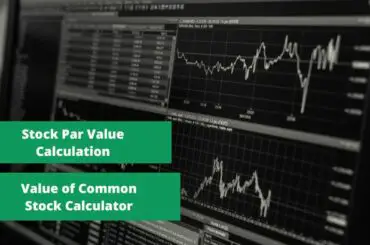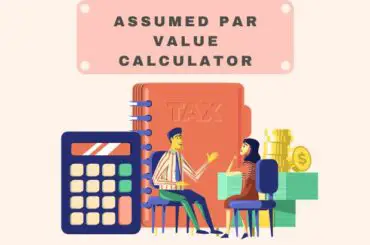Information presented on this web page is intended for informational and educational purposes only and is not meant to be taken as legal, financial, investment or tax advice. We do not accept any responsibility for any trading or investment related losses. Please review our disclaimer on before taking action based upon anything you read or see.
If you’ve had a credit card debt, you’re undoubtedly familiar with the sensation of being slammed with an interest payment. And if you attempted to calculate it, you likely quickly discovered that it’s not that simple. The interest rate on a credit card is the cardholder’s annual yield (APR). This credit card interest rate calculator will help you find the interest rate easily.
However, in most situations, interest increases daily. Only a 0% APR period would no charge be charged on a debt outside the time limit. If your card issuer is now waiving the amount owing to the coronavirus, this is true.
To summarize, you must take the time to learn how interest works. Thus, we have made this post on the credit card interest rate calculator to aid you.
How to Use this Credit Card Interest Rate Calculator
You don’t have to be concerned about how your interest rates affect your credit card debt. A monthly interest rate calculator might help you get back on track quickly.
Interest would be the most expensive item you incur if you have significant debt on one or more bank cards. How soon you pay it off will determine how much money you save in the long term.
That’s why this blog’s Credit Card Interest Rate Calculator might assist. Depending on your credit term and down payment, it will notify you how much tax you’ll pay on your credit card debt. This can get done through the following steps:
Step 1: Enter the value of your credit amount into the columns provided
Step 2: Enter the value of your monthly payment
3 Step: Enter the credit term
Step 4: Click on “calculate.” And the calculator will process and display the interest rate (in %).
Step 5: Click on “reset” if you desire to recalculate, and all the values you earlier entered will get cleared.
Credit Card Interest Rate Calculator
How do I Calculate Interest on my Credit Card?

Credit card interest is calculated in three steps. Here’s a quick rundown of how it works:
Calculate the daily rate by converting the yearly rate.
The average annual rate, or APR, is shown as your interest rate on your bill.
You’ll need to adjust the APR to a daily rate since interest is paid daily. Divide by 365 to get the answer. Some financial institutions are split by 360. The difference isn’t significant for our intent since it only affects the result by hair. The outcome is the periodic rate of interest, commonly known as the daily periodical rate.
Calculate your average daily balance
The days used in the pay cycle will get shown on your invoice. Your balance on those days determines the amount of interest you pay.
You begin with your unpaid debt, the quantity from the preceding period. The amount increases when you place an order and decreases when you pay a bill. With each day, go over the pay period, use the transactions’ details on your statement, and note down each day’s amount.
After that, sum up all of your daily amounts. Next, divide them by the number of days in the pay period. The end outcome is your everyday average value.
Put everything together
The last step is to raise your daily rate by your estimated average amount. Then divide the amount by the number of occasions in the billing month.
Your actual interest charge may fluctuate significantly from this computed figure depending on if your provider adds interest daily or weekly. Compounding adds accumulated interest to an unpaid amount, resulting in compounded interest.
What is 24% APR on a credit card?
A credit card with a 24 percent APR means that the interest you pay over a year is approximately 24 percent of your balance. If your APR is 24% and you have a $1,000 amount, you will owe $236.71 in the accumulated interest of the year.
How can I Avoid Paying Interest on my Credit Card?

Your credit card company may allow you to settle your credit card debt over time. Carrying debt on your bank card from month to month, on the other hand, almost always implies paying interest in the form of a financing fee. Avoiding credit card interest is essential to keep your bank card free or reduce the cost of holding one. You may do this in the following ways:
Pay off your credit card in full each month.
You won’t have a balance if you settle off all of your bills in full each month. This implies you won’t have to pay interest on your credit card. However, it is all too simple to consume more than you can afford all at once. This is true since paying using a credit card is less tangible than paying with cash.
Check your credit card activity twice a month to see whether you’re approaching your spending limit.
Use a stored value card to refinance.
If you have credit card debt, transferring it to a stored value card will give you considerable time to pay it off at 0% interest. This usually takes a year or more. This may also help you save a significant amount of money.
Make significant purchases with caution.
You have choices other than taking on credit card debt if you intend to make an impulse item in the coming years that you’ll need to repay over a lengthy period. However, keep your costs under control while deciding how to fund a high cost. This is true since you may be charged late fees or interest on any leftover debt after a promotional period.
Search for a credit card with a 0% introductory APR on bulk orders. This may offer you a year or more to pay without incurring interest charges. However, you’ll be charged interest on any outstanding debt after the 0% APR period.
Take into account deferred interest funding.
This financing is available on certain retail and medical credit cards. It may be beneficial, but there is a catch. You’ll owe interest on the total amount you acquired, not just the outstanding balance, if you don’t repay your balance in full before the end of the advertising no-interest period.
Choose a buy-now, pay-later option.
These programs enable you to break down significant expenditures into smaller installments. If you skip a payment, you may be charged interest or a fee and late fees.
Frequently Asked Questions
How do I Calculate how long Interest I will pay?
Interest on a credit card is calculated according to the conditions of your card member contract. It’s determined as a daily rate by splitting your annual proportion by 365 and multiplying your total cost by the weekly rate. That amount then increases your bill.
Is the 19.99 interest rate high for a credit card?
Yes. Any credit card interest rate under 14 percent is considered favorable. This is around the average regular interest rate on credit cards for persons with great credit.
While you cannot influence all aspects that affect your APR, you may take steps to improve or preserve your credibility. You might also try to bargain with your creditor for a reduced APR.
If your credit rating needs to be improved, the measures below may make you eligible for a reduced APR in the future:
- Keep track of your credit score.
- Make timely payments.
- Reduce your credit usage by not using more than 30% of your available credit.
- Keep your existing no-annual-fee bank cards active and current with minor transactions rather than applying for many credit cards at once.
- Keep an eye on your credit record; you may lay the groundwork for a reduced APR and more cash on hand with a few simple steps.
How much interest will I pay on my credit card balance?
Divide the card’s APR by 365 to determine how much extra you’ll pay on your credit card. Then divide the value by your estimated average balance and the duration of the billing cycle. Your monthly credit report will also include the interest rates you owe.
What does a 25% APR mean?
If your bank card has a 25% APR and you maintain a $100 amount for a year, you will owe $125. The actual rate of investment you’ll pay will be higher.
Are 24.99 a high APR?
However, a 24.99 percent APR is appropriate for private lines of credit, especially for persons with poor credit. If at all possible, you should avoid accepting a rate this high. A credit card with a 24.99 percent APR is respectable but not ideal. A credit card’s average annual percentage rate (APR) is 18.32 percent.
Do I pay APR if I pay on time?
There’s no need to worry about your APR if you repay on time and in full. On the other hand, your APR is essential if you don’t pay your debt in full. Many bank cards have 20% to 30% APRs, which implies you might wind yourself paying significantly more in the long run.
Is a 9.99 APR good?
Any annual percentage rate under 14 percent is considered favorable. This is around the average interest rate on bank cards for persons with great credit. Even a respectable credit card interest charge for folks with poor credit scores isn’t that low.
Is the 19% interest rate high for a credit card?
Even a respectable annual interest rate for folks with poor credit scores isn’t that poor. Credit card customers with excellent or fair credit, for instance, might make payments at a rate of 19 percent or more per year and yet have a below-average APR. The Overall is more significant for a credit card isn’t much less than 20%.
Why is my APR so high with good credit?
In business, the more the chance you take, the greater the return profit. Credit cards are a significant risk for institutions and other card issuers since many users pay late or not at all. To mitigate this risk, issuers demand rates of interest.
How long does it take to pay interest on a credit card?
The majority of credit cards offer a 21-day incentive time limit. This period begins on the day your monthly report is created and ends on the day your bill is due.
How often do credit cards calculate interest?
Interest is levied daily when you maintain monthly debt on a credit card. It impacts both your current balance and any future purchases you make. The income you pay one day is added to the sum earning interest the next.
How do I calculate interest?
To get the monthly interest rate, divide the yearly interest rate by 12. Divide six by 12 to get a monthly lending rate of 0.5 percent, for instance, if a bank charges you a 6% annual marginal rate.
How long is credit card interest-free?
The payment deadline for your credit card might be between 18 and 25 weekdays from the date specified; the day the report is issued. As a result, the interest-free credit term might last from 18 to 55 days. This is determined by the bill schedule date on your bank card.
Do you only pay interest if you don’t pay on time?
If you pay on schedule and within budget every month, you won’t have to pay APR. Also, your credit card probably has a time limit. Grace refers to a period after your reporting cycle ends during which you may pay off your amount and avoid paying interest.
Should I use my credit card every month?
To maintain your credit card account open and operational, you should use it at least once a quarter. This frequency also assures that your card issuer regularly sends information to the credit bureaus.
Do credit cards charge interest daily?
The large bulk of credit card companies compounds interest every day. This implies that your claim is applied to your principal (initial) sum at the end of each day. Examine your card member contract to ensure that interest is increased every day.
Is credit card interest charged monthly?
You’ll be charged interest if you don’t pay your credit card debt by the due date every month. Earnings are accumulated daily when you retain an obligation monthly, depending on the Day Rate (DPR). DPR is another method of expressing your daily interest expense.





